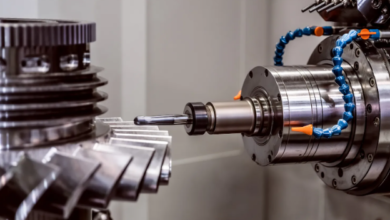
Key Takeaways:
- Modern cabling solutions are integral to supporting high-speed data transmission and emerging technologies.
- Innovations like Power over Ethernet (PoE) and fiber optics are revolutionizing network infrastructures.
- Adopting advanced cabling systems ensures scalability and future-proof digital infrastructures.
Table of Contents:
- Advancements in Fiber Optic Technology
- Power Over Ethernet (PoE): Simplifying Connectivity
- Integration with IoT and Smart Building Technologies
- Eco-Friendly Cabling: A Step Towards Sustainability
- Preparing for Future Technological Demands
In the digital transformation era, robust cabling solutions form the silent foundation behind high-speed connectivity and seamless communication. Organizations striving to remain competitive must keep pace with breakthrough innovations in cabling that serve as the backbone of tomorrow’s networks and smart environments. As our cities evolve into data-driven hubs and new technologies demand ever-increasing bandwidth, businesses and institutions are turning to experts in telecommunications Nashville to design, install, and maintain advanced infrastructure. These professionals play a pivotal role in ensuring that organizations aren’t just meeting today’s IT needs, but are also prepared for the rapidly emerging requirements of the future.
Modernizing cabling involves more than simply replacing outdated wires; it involves implementing forward-thinking strategies like deploying high-speed fiber, adopting seamless power and data delivery methods, and optimizing network layouts for peak efficiency.
Advancements in Fiber Optic Technology
Fiber optic technology stands at the forefront of modern cabling innovation, offering an unprecedented leap in speed, security, and performance compared to older copper-based solutions. Fiber optic cables transmit data through light pulses, dramatically increasing data capacity, transmission distance, and immunity to electromagnetic interference. This evolution means businesses can tap into ultra-high–speed connections, supporting seamless video streaming, large data uploads, secure transactions, and virtually lossless data transfers across buildings or continents.
Driving 5G and Cloud Computing
The next generation of wireless communication—including 5G—and the exponential growth of cloud-driven business models would not be possible without the robust backbone of fiber optics. With more mobile devices, edge computing, and real-time digital processes, only the bandwidth and minimized fiber latency can support these advances reliably. State-of-the-art fiber networks facilitate lightning-fast connections between data centers, mobile towers, distributed offices, and endpoint devices, ensuring the agility and responsiveness that modern digital enterprises require. As digital business ecosystems become the norm, upgrading to fiber optic solutions is quickly becoming a foundational necessity rather than a luxury.
Power Over Ethernet (PoE): Simplifying Connectivity
Power over Ethernet (PoE) is revolutionizing how organizations deploy and maintain their networks by allowing electrical power and data to travel over a single Ethernet cable. This innovation streamlines installation by minimizing the clutter, expense, and time required to run separate power and network cables throughout facilities. PoE is now integral to a wide range of settings—from smart campuses and healthcare complexes to sprawling corporate headquarters—enabling cost-effective modernization and rapid rollout of advanced technology.
Empowering Modern Devices
The true power of PoE lies in its ability to support and energize a new generation of networked devices, including IP security cameras, VoIP phones, Wi-Fi access points, and an ever-expanding array of IoT sensors. These devices can now be located in optimal positions—sometimes far from traditional power sources—resulting in smarter, more flexible design choices for facility managers.
Integration with IoT and Smart Building Technologies
The digital revolution is bringing an avalanche of connected devices into homes, businesses, and entire cities. The rise of the Internet of Things (IoT) and smart building innovations—ranging from intelligent lighting and HVAC to advanced security and access control—has intensified the demand on networks and cabling infrastructures. Supporting such diverse applications mandates vast data capacity and the delivery of consistent power and rock-solid connectivity to sometimes thousands of endpoints spread throughout a property.
Building the Foundation for Smart Environments
Modern cabling systems enable connecting, monitoring, and automating these advanced technologies efficiently, allowing facilities to offer improved energy savings, enhanced safety, and higher comfort levels for occupants. Meticulous network planning and the deployment of high-performance cabling guarantee that organizations can support today’s advanced devices while seamlessly integrating whatever next-generation applications the future brings. This transformation makes cabling central to realizing intelligent, adaptive buildings and cities.
Eco-Friendly Cabling: A Step Towards Sustainability
As sustainability climbs to the forefront of business objectives worldwide, the cabling sector innovates with environmentally friendly solutions. Advances in cable manufacturing now focus on eco-conscious materials, recyclable packaging, and more energy-efficient production processes. Green cabling technology is engineered for durability and longevity, aiming to reduce the need for frequent replacements and lower its total environmental footprint across installation, use, and eventual disposal.
Longevity and Environmental Impact
Transitioning to such sustainable cabling solutions drives both environmental and financial benefits. It reinforces an organization’s commitment to global sustainability initiatives and extends infrastructure investment lifespans, lowering operational costs related to maintenance and waste. The move toward eco-friendly cabling exemplifies how technological advancement and environmental responsibility can progress, enabling organizations to enhance connectivity while supporting a healthier planet.
Preparing for Future Technological Demands
The pace of innovation in the digital realm shows no signs of slowing. New applications, increasing user density, and growing expectations for reliability and speed drive the need for cutting-edge cabling infrastructure. Adopting state-of-the-art network cabling—designed with flexibility and scalability at its core-organizations ensure that their digital foundations can support everything from rapid expansions to unforeseen technological shifts for years to come.
A Proactive Approach for Lasting Value
Proactively upgrading to advanced cabling technologies is a strategic investment that positions enterprises, educational institutions, and public organizations for sustained digital growth, adaptability, and security. This long-term outlook helps avoid the pitfalls and expenses of frequent system overhauls while maximizing the return on infrastructure investments. Ultimately, those who take a forward-thinking approach to their network cabling today will be best equipped to thrive in a future where connectivity powers every facet of business, education, and daily life.




